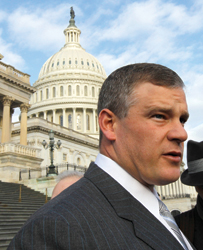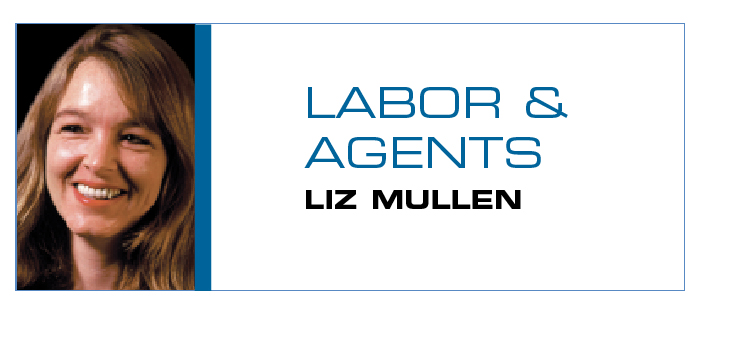Most of the movement in almost two years of collective bargaining between the NFL and NFL Players Association centered on the players’ plan to try to avoid a lockout by shifting the share of incremental revenue from the players to the owners, according to an NFLPA document.
The NFL and NFLPA, during their bargaining sessions, also discussed the league’s proposal to expand the regular season to 18 games as well as a proposal to cap rookie pay. Talks about those two proposals, however, occurred in fits and starts, according to the NFLPA CBA Chronology document, and neither seemed to gain any traction.
However, a proposal to “peg” the salary cap at a fixed number, coupled with an agreement to give the owners the majority of new revenue — or “upside,” above the peg — was the focus of at least nine meetings during the chronicled span, including bargaining sessions, a conference call and small-group meetings dating back to when the players first proposed the idea on June 2, 2010, and into early 2011, according to the document.
In fact, the concept spurred at least seven small meetings between NFLPA and NFL officials in the fall of 2010, including a Sept. 1, 2010, meeting at which the players, NFL Commissioner Roger Goodell and lead NFL negotiator Jeff Pash reviewed it in writing.
The five-page NFLPA document, which was distributed to players recently to give them an understanding of what transpired in the collective-bargaining talks, provides a timeline of what are considered the most significant events in the bargaining that began on June 3, 2009, and ended on Feb. 17, 2011, when both sides agreed to federal mediation. That mediation failed to produce a new collective-bargaining agreement. The NFLPA decertified as a union on March 11, and the NFL implemented a lockout hours later, on March 12.
 |
AP IMAGES
Pete Kendall says players were willing to take a pay cut without financial information. |
The chronology offers new information on discussions about the three main proposals in the talks for a new labor agreement: an 18-game regular-season schedule; a rookie wage scale; and a different split in the share of revenue between owners and players.
Pete Kendall, who is the NFLPA permanent player rep and was present at most of the bargaining sessions, said the timeline also sheds light on what he says is one of the biggest public misconceptions about the bargaining: that players were not willing to make concessions.
“The one thing that seems to be out there is that the players haven’t given on anything, but that couldn’t be further from the truth,” said Kendall, in a telephone interview. “The players were willing to take a rollback on pay without any substantial financial information.”
In fact, while press coverage centered on the 18-game schedule, the rookie wage scale and what players said was a demand for an 18 percent rollback of the salary cap, much of the back-and-forth discussion centered on the players’ proposal to fix, or peg, the salary cap, with an agreement that players share with owners the revenue that came in over the cap. That allowance for splitting the actual revenue that came in over the projected revenue at which the cap was set was called “the true-up,” and Kendall said players were willing to give the owners the majority of that in order to make a deal.
When it came to the three major issues on the table in the NFL labor talks, Kendall said he would rank the pegged cap/true-up subject first, the rookie pay system second, and the 18-game proposal third, in order of how much movement was made during discussions.
“Where the most progress was seemingly made was on the pegged cap and the true-up,” Kendall said. “There had been a fair amount of discussion on the 18 games, but the players’ rank and file were, in essence, universally against it. The 18 games was the proposal with the least amount of movement.”
As for the rookie pay-scale proposal, Kendall said that at first it seemed both sides could agree to a new system that would change compensation for rookies, but that those talks fell apart over details.
The owners — who opted out of the prior CBA — did not reveal their proposal for a rookie wage scale and the 18 percent shift in the players’ share of NFL revenue until five months into the talks, according to the document. The players responded about a month later, on Dec. 18, 2009, with a counterproposal and a statement that they would not accept significant economic changes without financial justification.
The NFLPA requested audited financial statements and/or detailed non-player cost information from the NFL at least 12 times, from May 18, 2009, through Nov. 8, 2010. The league responded with “one page of limited cost data” on Nov. 4, 2009, and with four pages of “league-wide cost information,” for 2007 and 2008, according to the document.
The NFL said the league had not seen the document and declined comment.
A claim by owners that the players dispute — that players received 70 percent of incremental revenue in the 2006 CBA — is something the players tried to address by conceding to a new pegged structure in which the percentage split of actual revenue over the peg would favor the owners. The players say the 70 percent number is false because it doesn’t take into account the $1 billion taken off the top of gross revenue that makes up the salary cap. The true percentage of incremental revenue going to the players was 53 percent, not 70 percent, the players contend.
The pegged cap with the true-up was meant to “flip the split” of incremental revenue going to the players, so that owners would get the majority in the first four years of the new CBA, and the discussed amount to go to owners was about 55 percent, Kendall said.
Asked why the players agreed to this even though they went into the talks demanding financial justification, Kendall said, “The thinking was to try to avoid being where we are now.”
Liz Mullen can be reached at lmullen@sportsbusinessjournal.com. Follow her on Twitter @SBJLizMullen.





